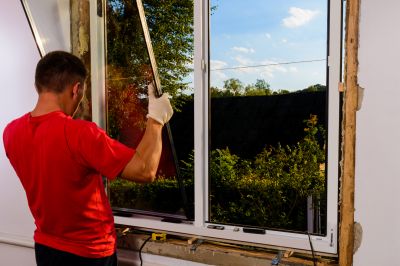Leading Storm Restoration Supplies For Rapid Damage Control
Choose from high-performance products designed to help you manage and repair storm-related damages effectively.
 Storm restoration products are essential tools and materials used to repair and reinforce properties affected by severe weather events such as hurricanes, tornadoes, hailstorms, and heavy winds. These products help mitigate further damage, restore structural integrity, and improve safety during and after storm events. From durable roofing materials to waterproof sealants, a wide range of products are available to address various restoration needs. Proper selection and use of these products can significantly impact the effectiveness of storm recovery efforts.
Storm restoration products are essential tools and materials used to repair and reinforce properties affected by severe weather events such as hurricanes, tornadoes, hailstorms, and heavy winds. These products help mitigate further damage, restore structural integrity, and improve safety during and after storm events. From durable roofing materials to waterproof sealants, a wide range of products are available to address various restoration needs. Proper selection and use of these products can significantly impact the effectiveness of storm recovery efforts.
Top Overall Option
Heavy-Duty Weatherproofing Sealant
A versatile, high-performance sealant designed to provide a reliable barrier against water intrusion, wind infiltration, and weather-related stress. Suitable for sealing roofs, windows, and siding, this product offers ease of application and long-lasting adhesion, making it a favored choice for comprehensive storm restoration efforts.
Types of Products For Storm Restorations
Roofing Shingles and Panels
Varied options in durable roofing materials designed to replace or reinforce damaged roofs, offering weather resistance and longevity.
Waterproof Sealants and Caulks
Products used to seal gaps, cracks, and joints to prevent water intrusion and air leaks in storm-damaged structures.
Storm Windows and Impact-Resistant Glass
Window solutions that provide enhanced protection against flying debris and high winds during storms.
Siding and Exterior Cladding
Materials designed to repair or replace damaged siding, improving both appearance and weather resistance.
Roof Underlayment and Ice Barriers
Protective layers installed beneath roofing materials to prevent water leaks and ice damming.
Gutter Guards and Drainage Solutions
Accessories that improve water runoff and prevent debris buildup, reducing flood risks during heavy rains.
Emergency Boarding and Coverings
Temporary solutions such as plywood panels used to secure properties quickly after storm damage.
Structural Reinforcement Hardware
Brackets, straps, and fasteners designed to strengthen weakened structural elements.
Debris Removal Tools
Equipment such as heavy-duty rakes, shovels, and debris bags to clear storm-related clutter efficiently.
Flood Barriers and Sandbags
Portable barriers that help divert floodwaters and protect properties from inundation.
Insulation and Vapor Barriers
Materials used to restore thermal insulation and prevent moisture buildup inside structures.
Electrical and Utility Repair Kits
Tools and components for restoring electrical systems damaged during storms.
HVAC Restoration Products
Filters, ducts, and repair parts for restoring heating, ventilation, and air conditioning systems.
Mold and Mildew Prevention Products
Solutions to inhibit mold growth following water intrusion or moisture accumulation.
Fire-Resistant Building Materials
Enhanced materials for rebuilding or reinforcing structures against fire hazards post-storm.
Popular Choices
Widely used for their ability to withstand debris impact and high winds.
Easy-to-apply tape for quick temporary fixes on damaged roofing surfaces.
Versatile covers used to protect exposed structures from further weather damage.
Portable barriers effective for flood mitigation in vulnerable areas.
Sealants formulated for high-stress weather environments to prevent leaks.
Straps used to secure weakened roof trusses and wall framing.
Complete kits for rapid boarding of windows and doors after storm damage.
Paints designed to add an extra layer of weather resistance to exterior surfaces.
Components that improve drainage and reduce water pooling around foundations.
Packaged solutions for restoring thermal insulation after water damage.
Special drywall options that resist mold growth in damp environments.
Reliable power sources during outages caused by storms.
Equipment for quick repairs to electrical and plumbing systems.
Siding materials designed to withstand hail and flying debris.
Heavy-duty covers to prevent debris from clogging drainage systems.
Tools for removing excess water from flooded areas efficiently.
Insulation options that add a layer of fire protection to structures.
In storm-prone regions like Englewood, Colorado, having access to reliable restoration products is crucial. These products are designed to withstand harsh weather conditions and provide long-lasting protection. Whether dealing with roof damage, broken windows, or compromised siding, the right materials can facilitate efficient repairs and reduce downtime. It is important to understand the different types of restoration products, their applications, and considerations to ensure optimal results.
Choosing appropriate storm restoration products involves evaluating factors such as durability, ease of installation, compatibility with existing structures, and resistance to weather elements. Properly selected products can help property owners and contractors restore properties effectively while minimizing future vulnerabilities. Staying informed about the latest product options and their features is vital for making educated purchasing decisions in storm recovery scenarios.
Key Buying Considerations
- Assess the specific storm risks in your area to select appropriate products.
- Durability and weather resistance are critical factors for long-term performance.
- Ease of installation can impact the speed and cost of repairs.
- Compatibility with existing structures ensures seamless integration.
- Waterproof and sealant products should be rated for high-stress environments.
- Impact resistance is vital for windows, siding, and roofing materials.
- Consider the weight and handling requirements of heavy-duty products.
- Check for certifications or standards that verify product performance.
- Availability of replacement parts or accessories can influence ongoing maintenance.
- Budget constraints should be balanced with the quality and longevity of products.
- Look for products with proven track records in storm-prone regions.
- Ensure proper ventilation and moisture control features are included where applicable.
- Select products that offer flexibility for various repair scenarios.
- Review manufacturer instructions and warranty policies before purchasing.
- Consider the environmental conditions of your property, such as snow load and wind zones.
